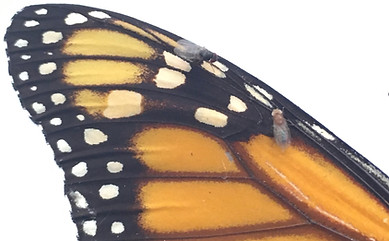
Marianthi (Marianna) Karageorgi
Μαριάνθη (Μαριάννα) Καραγεώργη
Research interests
Adaptation to toxins in changing environments. Curiosity-driven science. Revisit old questions.

Background
I was born in Drama, a small city in the northeastern part of Greece. I grew up reading novels, poetry and puzzling over math. I aspired to become a novelist. I've ended up taking a long and winding path exploring cultures and continents through science and travel.
My path began during my undergraduate studies in Crete, where I fell in love with evolutionary biology. I found it fascinating how it can explain patterns and processes that have taken place over millions of years. To this day, I keep a copy of Gilbert's Developmental Biology textbook. I was drawn to the chapter "Developmental Mechanisms of Evolutionary Change" describing hox genes and the evolution of body plans. For my master's studies, I went to Heidelberg, a vibrant cultural and scientific center with a strong tradition in evolutionary and developmental biology. I researched diverse model systems, from mice and medaka fish to hydra and a "living fossil" annelid. I learned classical genetic and molecular biology methods to study the role of genes and gene regulation in the development and evolution of novel morphologies. It was during this time that I developed what would become a core part of my research: a strong interest in establishing links between specific genetic changes, their phenotypic effects, and their adaptive significance.
My doctoral and postdoctoral research has focused on patterns and processes of adaptation to novel and changing environments across timescales.
During my PhD at the Marseille Developmental Biology Institute, I asked how organisms evolve new behaviors to adapt to novel environments. I examined this question by studying the agricultural pest Drosophila suzukii, which has shifted its ecological niche from rotting to fresh fruit. By applying CRISPR and neurogenetic tools, I discovered that this pest evolved its novel egg-laying preference through stepwise integration of sensory systems (Karageorgi et al., Current Biology, 2017). Seeking to experience different intellectual approaches in evolutionary biology, I moved to the US for my postdoctoral research. At the University of California, Berkeley, I investigated an iconic example in ecology and evolution - how the monarch butterfly evolved resistance to toxins of its host plants. I led a study where we used CRISPR as a long-term "time machine", and retraced the genetic basis of toxin resistance in the lineage leading to the monarch butterfly (Karageorgi et al., Nature, 2019). Aiming to expand my skills in population genetics and genomics, I then joined Stanford University for a second postdoc, supported by the K99/R00 Pathway to Independence Award. There, I explored how large-effect insecticide-resistance polymorphisms are maintained in natural Drosophila melanogaster populations. I led a study where we used experimental evolution in field cages as a short-term "time machine" to demonstrate that beneficial reversals of dominance can maintain these large-effect polymorphisms in fluctuating environments for the presence of the insecticide (Karageorgi et al., Nature Ecology and Evolution, 2025). Additionally, my research showed that despite significant changes in genetic variation due to insecticide exposure, seasonal adaptive processes can remain unaffected (Karageorgi et al., in preparation).
My scientific and travel path is about to take me to a new adventure on toxins in changing environments across timescale!
I think that when I grow old and return to my hometown, I will write a novel about people that make science over decades with different technologies and knowledge, and at different places with different resources.